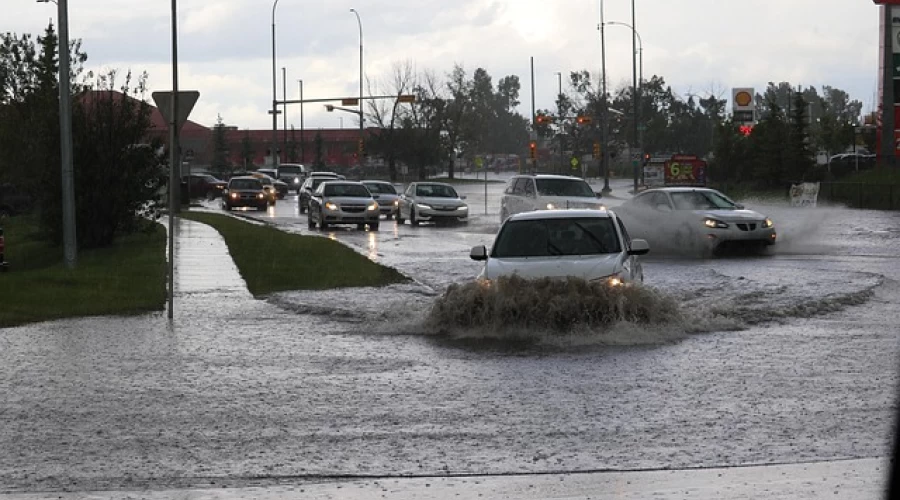Flooding and Health: Safely Cleaning your Home
This article contains information & advice regarding risks that do not appear on the Risk Register.

Article taken directly from the UKHSA
How to safely clean your home
The recovery phase following a flood event includes cleaning and drying of your home or property to ensure and check for any health harms as a result of the flood. Floodwater can contain harmful pollutants or contaminants hazardous to humans and animals. When cleaning up a home affected by floodwater, the use of rubber boots, protective overalls or waterproof apron, and waterproof gloves are important to avoid exposure to floodwater.
The National Flood Forum provides information on local flood groups, while further information on flood recovery is available on GOV.UK.
Please note that it is normal to experience tiredness, difficulty sleeping, and anxiety during these circumstances. It can take time to recover after a flood. Take regular breaks and seek help from others where possible.
It’s also important to consider the following.
First, flood water can carry contaminants that can be harmful. Please wear rubber boots, waterproof gloves and a plastic apron while cleaning up for protection.
If the clean-up causes a lot of water to splash from scrubbing, hosing or pressure-washing, wear a safety face mask.
Wear eye protection such as goggles.
Thoroughly wash your hands with warm water and soap after each cleaning session and contact with flood water. If you have any open cuts or sores, clean and use waterproof plasters.
If you are experiencing water disruption, please use bottled water to wash your hands.
Be careful with electricals and gas; it’s advised not to turn gas or electricals if they may have become wet. Only turn them on once they have been checked by a qualified technician.
Related News

Emergency Alert Test - Sunday, 7 September at 15:00
>1m read
Emergency Alert Test - Sunday, 7 September at 15:00
How and what to wash
To reduce the risk of catching an infectious disease from flood water you should do the following.
Wash clothes used during cleaning on a separate wash cycle from your other clothes.
Be careful with clean-up as injuries can occur from electrocution or sharp items hidden by flood waters.
Use hot water and detergent to clean all hard surfaces across your home that may have come into contact with floodwater – this includes walls and flooring.
Clean and disinfect your kitchen including all countertops, all crockery (for example plates, cups, bowls) and cooking items (such as chopping boards, pans, vessels, knives and other accessories) before using them with food. If you have a dishwasher, and it has been cleared by a qualified technician, you can use it to clean and sanitise your kitchen items. It is advised to discard any wooden boards and utensils if contaminated by floodwater.
Textile items such as clothing, bedding and toys should be washed on a 60°C cycle with detergent. If you suspect issues with your drainage system, it is recommended that a launderette be used for washing large quantities of clothes and linens until your waste-water system has been checked.
If there are any dead animals such as rodents and pests, if possible, double bag these in plastic and dispose them while wearing rubber gloves into your normal waste bin.
How to dry your items
It’s very important to ensure heaters, dryers or fires are well-ventilated to avoid carbon monoxide poisoning.
Ensure good ventilation if using portable indoor heating appliances when drying indoor spaces.
Do not use petrol or diesel generators or other similar fuel-driven equipment indoors because their exhaust gases contain carbon monoxide, which can poison if in high concentrations in the air.
Heating, dehumidifiers and good ventilation can help to dry out your home.
If you have gas or oil central heating, make sure to get it checked by a qualified engineer before turning it on. Keep the thermostat between 20°C and 22°C for steady drying.
If you have air bricks to any underfloor spaces, ensure these are unblocked to boost cross ventilation to these areas. Make sure to look for any loose material or dust while your floorboards and walls continue to dry out, vacuuming these areas on a regular basis.
When you can, remove dirty water and silt from the property. If you have wooden floors, check the space under the ground floor as the dirty water in this space may need to be pumped out.
As your home continues to dry out, the mould should disappear. If it persists, please contact a specialist cleaner.
Any items that have been discarded during the cleaning and drying process should be placed in rubbish bags and within hard bins.


